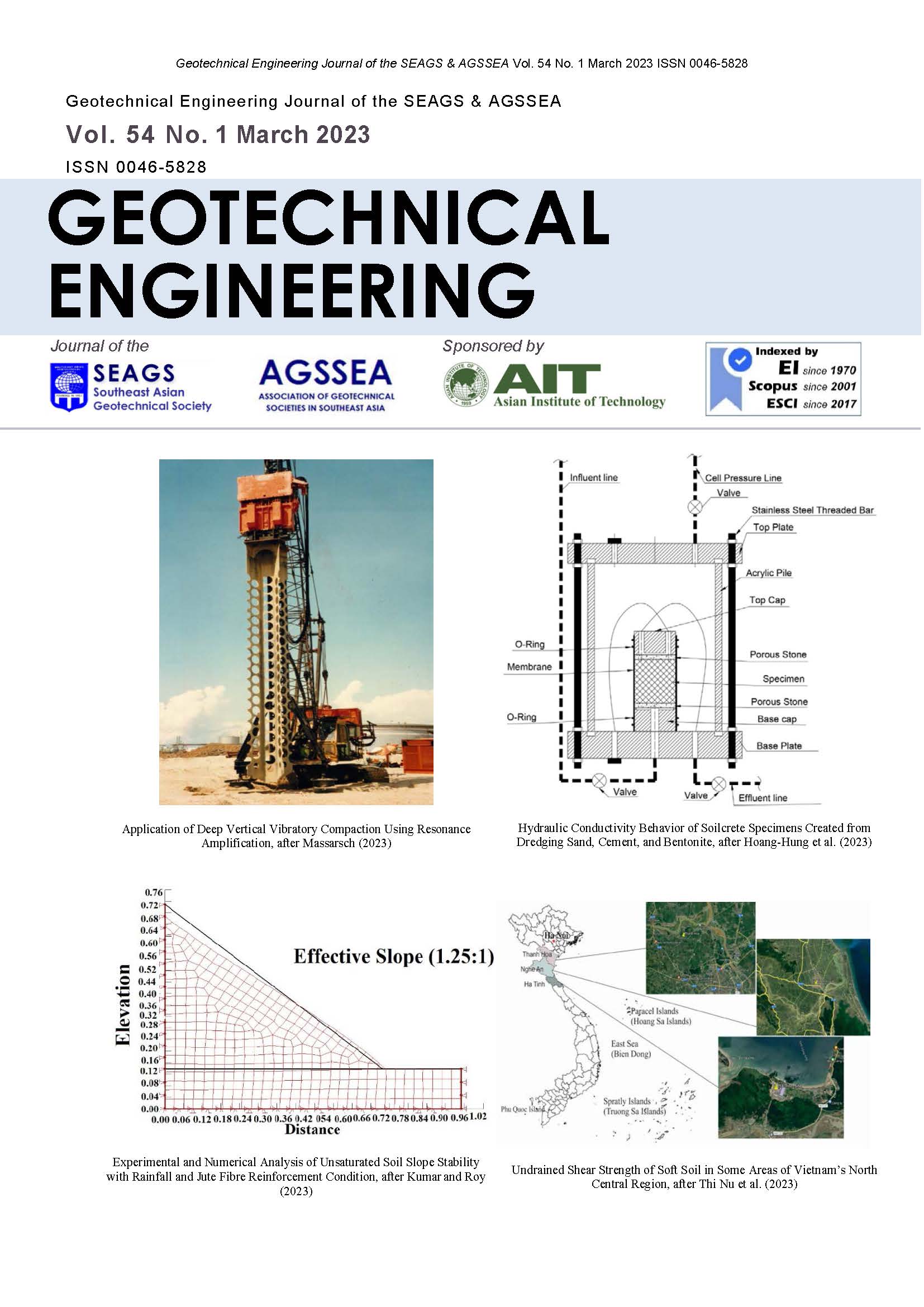Application of Deep Vertical Vibratory Compaction Using Resonance Amplification
Main Article Content
Abstract
The mechanism which governs the compaction of granular soils is reviewed. Two different effects are identified: densification (volume change) and an increase in horizontal stress. The ground vibration velocity, which is directly related to shear strain, is a crucial parameter of soil densification. The implementation of deep vertical vibratory compaction (DVVC) is described. The compaction effect in granular soils depends primarily on shear strain amplitude and number of vibration cycles. Vibration amplification occurs at the resonance frequency of the vibrator-probe-soil system. Resonance can be achieved by changing the operating frequency of the vibrator. Resonance compaction (DVVCr), which utilizes the vibration amplification effect, is discussed. The shape and mass of the compaction probe are important parameters for enhancing the compaction effect. An important aspect of DVVCr is the monitoring and process control system (MPCS), which assists the machine operator in executing the compaction process. Resonance compaction has the advantage that the treatment process can be carried out at a significantly lower frequency than conventional vibratory driving, resulting in lower energy consumption.
Article Details

This work is licensed under a Creative Commons Attribution-NonCommercial-NoDerivatives 4.0 International License.
Copyright © 2019 Association of Geotechnical Societies in Southeast Asia (AGSSEA) - Southeast Asian Geotechnical Society (SEAGS).


